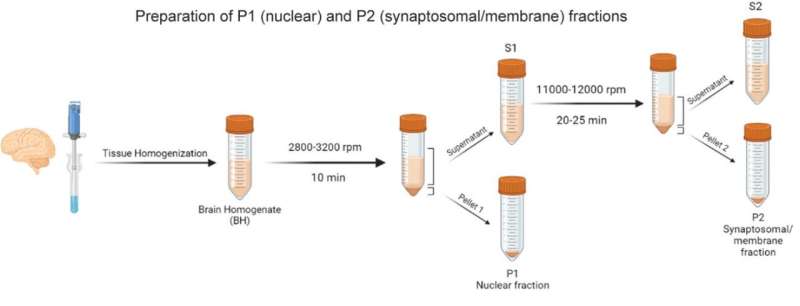This article has been reviewed according to Science X's editorial process and policies. Editors have highlighted the following attributes while ensuring the content's credibility:
fact-checked
trusted source
proofread
Exploring the potential of a novel PET-tracer in spotting early signs of Alzheimer's disease

Researchers at Karolinska Institutet have made exciting discoveries about Alzheimer's disease, a common form of dementia affecting millions of people around the world. In a study published in Alzheimer's & Dementia, they have explored the potential of novel synaptic PET-tracer UCB-J as an important early diagnostic biomarker/tool for Alzheimer's disease.
While there's no cure for Alzheimer's disease yet, researchers are working hard to find ways to detect it early, even before obvious signs appear.
PET imaging diagnostic technique uses selective and specific tracers—radioactive chemical molecules—for the early detection of pathological conditions and abnormal brain changes, such as those caused by Alzheimer's disease. This study focused on a new diagnostic PET-tracer called UCB-J, which could help see changes in the brain linked to Alzheimer's disease. The brain changes start happening 10–20 years before someone shows signs of the disease. Scientists want to find biomarkers, like clues, that can predict if someone might develop memory problems.
"The translational and clinical value of this study is particularly high as this is one of the first extensive ex vivo reports on novel synaptic PET- tracer UCB-J in AD brains and, most importantly, our study is very timely as UCB-J is on its way to being employed in future clinical studies," says Amit Kumar, Research Specialist at the Division of Clinical Geriatrics, Department of Neurobiology, Care Sciences and Society, Karolinska Institutet and the first and corresponding author of the article.
Protein helps brain cells to communicate
The researchers looked at a specific protein called SV2A, which is involved in how brain cells communicate. In Alzheimer's disease, the loss of these communication and brain cells is a big part of the problem.
UCB-J, is like a detecting tool that can track SV2A and show if there's a problem. In the study, they tested it on brains from people with AD and compared them to normal brains. The results were promising—UCB-J could spot the issues in Alzheimer's brains.
However, the study also found that UCB-J might have some hiccups resulting from interaction with other proteins in Alzheimer's brains. This means scientists need to be careful when using this tool in future studies.
Different techniques to study the brains
The researchers used specialized techniques to study the brains, like postmortem brain imaging and specific protein detection tests. The brain tissues they studied are rare and not easy to get, making this research even more important.
In simple terms, this study helps us understand more about Alzheimer's related brain changes (synaptic loss) and how we might be able to detect it early. It's like finding a new tool that could be useful in the future to help people with memory problems. The scientists are excited about these findings, and they think it could be a step towards better ways of dealing with Alzheimer's.
More information: Amit Kumar et al, Tracing synaptic loss in Alzheimer's brain with SV2A PET‐tracer UCB‐J, Alzheimer's & Dementia (2024). DOI: 10.1002/alz.13720



















